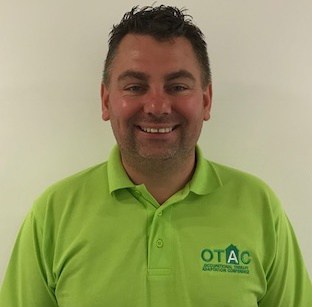The OT’s Perspective: How we can help enable children, young people and families


Paediatric occupational therapy is hugely important, and when OTs and manufacturers work from the same page, they can change lives, writes Stuart Barrow. Discussing a recent complex adaptation, he is involved with, the experienced OT shares how the industry can help work with occupational therapists to improve the process.
In my years as an OT, I’ve done my fair share of CYPF (Children, Young People & Families) occupational therapy work.
It’s hugely rewarding – equipping and enabling young people to have as independent a life as possible is an extremely worthwhile endeavour, so this month I wanted to focus on how occupational therapists and manufacturers can work together to make that happen.
I was recently asked to visit a child with cerebral palsy. As he is growing, his family home is no longer appropriate for them all and they require relocating.
As a private occupational therapist, this was some challenge. With no immediate access to the NHS, social care and GP records, I had to do a lot of the fact-finding myself.
To make things more complicated, the child cannot talk which meant I relied heavily on his relatives to help me conduct the assessment.
Being honest, it is one of the more challenging projects I have worked on and my hope is that by sharing some of my thought process with manufacturers, retailers and installers, I might be able to help the industry do their bit more effectively, be that supplying specific products to OTs who are involved in adaptations or in some other capacity.
The location of the property
A number of properties have been found by the housing association but for the following reasons, have been declined:
1. Too far away from important family members
2. Too far away from family GP
3. Too far away from specialist services
4. Too much excavating to create facilities
5. No parking nearby
6. No local amenities
These are key considerations for any OT looking to help a family with young children relocate, so it’s worth bearing this in mind, whichever role in the process you play.
The type of property
Given the child’s mobility challenges, a one-floor property like a flat or a bungalow would be the first choice, however, it isn’t as simple as that.
For a start, there are no bungalows available in the region under the ownership of the housing associations and no flats of sufficient size to house the whole family & carers that are required.
Consequently, having considered and dismissed those options, the only realistic choice is to adapt a house that is large enough.
And we’ve found one but it’s not perfect. This is where understanding the scope of the adaptive work is vital, as well as finding the right suppliers to get the jobs done quickly – the last thing the family wants is to move in and then find that there is still lots of work to be done to get the property right.
This is where equipment providers, mobility stores and manufacturers come in – the more they’re able to make OTs aware of the products, the easier the job is for us!
This particular house has three main problems that will need equipment and adaptations to solve:
1. Steps to the front door
Potential solutions: ramp, step lift, platform lift, wheelchair lift or reforming the steps
2. All bedrooms on the first floor
Potential solutions: through floor lift, stair lift, extension to build downstairs bedroom
3. Very small bathroom on ground floor and no first-floor bathroom
Potential solution: extension
Furthermore, there are a number of other considerations that I took into account when making my assessment:
1. Kitchen: The layout of the kitchen must allow any carer to see the client and an open plan layout will allow the family to eat together
2. Rear garden: A wheelchair accessible space will need to be created
3. Parking: I analysed how easy it will be for the client to get from the car to the house and vice versa and thankfully, this is possible with on-street parking – some other projects may require construction of a drive
4. Door widths: Wheelchairs and walking aids must be able to comfortably fit through all doors so my recommendation in this case was to widen all doors to at least an 838mm clear door opening, with ideal being 900mm
Here’s the full list of what we agreed on:
- External wheelchair lift
- Internal through floor lift
- Extension for a bathroom to include height adjustable bath with integral changing table, wash hand basin (height adjustable), showering facilities and toilet
- Level front and rear access
- Wheelchair accessible play area
- Safety flooring
I also considered a ground floor double bedroom and a shower room extension. This was decided against for several reasons, including planning considerations, cost, bedroom tax and the removal of a large part of the garden, compromising leisure and play.
In order for this work to be completed, I require the following services:
- Shower cubicle provider
- Through floor lift provider
- Bath supplier
- External lift supplier
- Flooring supplier for safety internal flooring and shower/bathroom flooring
- General builder/property maintenance company for extension
How can you support your local Occupational Therapist to meet the needs of their client?
- Can you provide this service as an all in one agency?
- Can you support occupational therapists with drawings? Contour Showers (amongst others) offer a free bathroom survey and can incorporate other manufacturers kit – in this instance an Abacus bath – to enable me to detail the layout, sizes and specifications required to the fund holder
- Do you provide one product, i.e. one through floor lift option, or go to the entire market to find a solution? This is really important as occupational therapists need access to multiple options to ensure the right product is sourced for their clients

